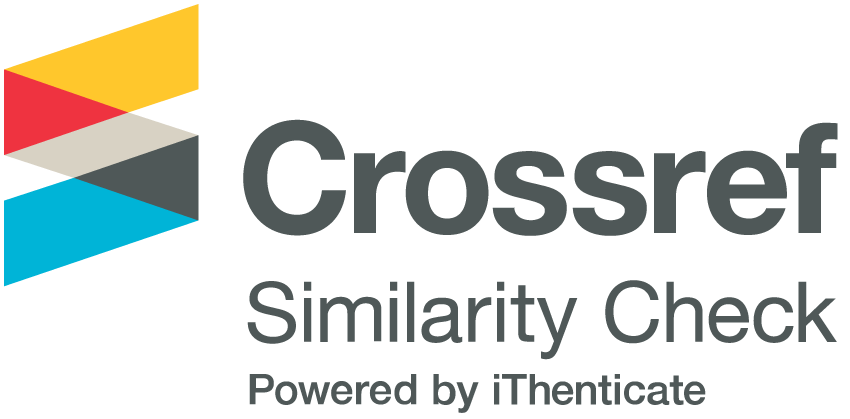Review of Business Location Research: a Bibliometric Analysis from 1968 to 2022
DOI:
https://doi.org/10.54790/rccs.92Keywords:
business location, co-word analysis, bibliometric analysis, SciMAT, longitudinal analysis, strategic diagram, thematic networkAbstract
This research presents the results of a bibliometric analysis of academic research published on the topic of business location during the period from 1968 to 2022. Specifically, it seeks to identify, from a longitudinal perspective over time, the relationships between past and current topics, as well as to predict emerging trends in this field of research. The analysis has been conducted using SciMAT software, through which strategic diagrams and thematic networks based on the co-occurrence of keywords are obtained. A total of 509 documents from 1138 authors and 1799 keyword clusters have been processed. The results show that the main topics within the area of business location in the last five years are “Foreign direct investment”, “Perspective”, “Growth” and “Decisions”.
Downloads
Metrics
References
Akın, B., & Seyfettinoğlu, Ü. (2022). Factors determining the location decision: Analysis of location choice preferences of the ICI-1000 companies with the nested logit model. Central Bank Review, 22(1), 57-75. https://doi.org/10.1016/j.cbrev.2022.03.001
Alcácer, J., & Chung, W. (2007). Location strategies and knowledge spillovers. Management science, 53(5), 760-776. https://doi.org/10.1287/mnsc.1060.0637
Alcácer, J., Dezső, C., & Zhao, M. (2015). Location choices under strategic interactions. Strategic Management Journal, 36(2), 197-215. https://doi.org/10.1002/smj.2214
Arauzo-Carod, J., Liviano-Solis, D., & Manjón-Antolín, M. (2010). Empirical studies in industrial location: An assessment of their methods and results. Journal of Regional Science, 50(3), 685-711. https://doi.org/10.1111/j.1467-9787.2009.00625.x
Arauzo-Carod, J.-M. (2013). Location determinants of new firms: does skill level of human capital really matter? Growth and Change, 44(1), 118-148. https://doi.org/10.1111/grow.12004
Assaf, A., & Agbola, F. (2011). Modelling the performance of Australian hotels: a DEA double bootstrap approach. Tourism economics, 17(1), 73-89. https://doi.org/10.5367/te.2011.0027
Bartik, T. J. (1985). Business location decisions in the United States: Estimates of the effects of unionization, taxes, and other characteristics of states. Journal of Business & Economic Statistics, 3(1), 14-22. https://doi.org/10.1080/07350015.1985.10509422
Bartik, T. J. (1988). The effects of environmental regulation on business location in the United States. Growth and Change, 19(3), 22-44. https://doi.org/10.1111/j.1468-2257.1988.tb00473.x
Braunerhjelm, P., & Svensson, R. (1996). Host country characteristics and agglomeration in foreign direct investment. Applied Economics, 28(7), 833-840. https://doi.org/10.1080/000368496328272
Callon, M., Courtial, J., & Laville, F. (1991). Co-word analysis as a tool for describing the network of interactions between basic and technological research: The case of polymer chemsitry. Scientometrics, 22(1), 155-205. https://doi.org/10.1007/BF02019280
Chang, X., & Li, J. (2019). Business performance prediction in location-based social commerce. Expert Systems with Applications, 126, 112-123. https://doi.org/10.1016/j.eswa.2019.01.086
Cissé, I., Dubé, J., & Brunelle, C. (2020). New business location: how local characteristics influence individual location decision? The Annals of Regional Science, 64(1), 185-214. https://doi.org/10.1007/s00168-019-00968-1
Clarivate Web of Science (WoS). (s.f.). Obtenido de https://webofscience.com/wos
Cobo, M., López-Herrera, A., Herrera-Viedma, E., & Herrera, F. (2012). SciMAT: A New Science Mapping Analysis Software Tool. Journal of the American Society for Information Science and Technology, 63(8), 1609–1630. https://doi.org/10.1002/asi.22688
Devereux, M., Griffith, R., & Simpson, H. (2007). Firm location decisions, regional grants and agglomeration externalities. Journal of Public Economics, 91(3-4), 413-435. https://doi.org/10.1016/j.jpubeco.2006.12.002
Dye, R., & Merriman, D. (2000). The effects of tax increment financing on economic development. Journal of urban Economics, 47(2), 306-328. https://doi.org/10.1006/juec.1999.2149
Enrich, P. D. (1996). Saving the states from themselves: Commerce clause constraints on state tax incentives for business. Harvard Law Review, 377-468. https://doi.org/10.2307/1342149
Gabe, T., & Bell, K. (2004). Tradeoffs between local taxes and government spending as determinants of business location. Journal of Regional Science, 44(1), 21-41. https://doi.org/10.1111/j.1085-9489.2004.00326.x
Gemar, G., Moniche, L., & Morales, A. (2016). Survival analysis of the Spanish hotel industry. Tourism Management, 54, 428-438. https://doi.org/10.1016/j.tourman.2015.12.012
Gemar, G., Soler, I. P., & Guzman-Parra, V. F. (2019). Predicting bankruptcy in resort hotels: a survival analysis. International Journal of Contemporary Hospitality Management, 31(4), 1546-1566. https://doi.org/10.1108/IJCHM-10-2017-0640
Gemar, G., Soler, I., & Sánchez-Teba, E. (2021). Waste Management: Valorisation Is the Way. Foods, 10(10), 2373. https://doi.org/10.3390/foods10102373
Griffith, R., Miller, H., & O’Connell, M. (2014). Ownership of intellectual property and corporate taxation. Journal of Public Economics, 112, 12-23. https://doi.org/10.1016/j.jpubeco.2014.01.009
He, J. (2006). Pollution haven hypothesis and environmental impacts of foreign direct investment: The case of industrial emission of sulfur dioxide (SO2) in Chinese provinces. Ecological economics, 60(1), 228-245. https://doi.org/10.1016/j.ecolecon.2005.12.008
Hirsch, J. (2005). An index to quantify an individual’s scientific research output. Proceedings of the National Academy of Sciences of the United States of America, 16569–16572. https://doi.org/10.1073/pnas.0507655102
Hofstede, G. (1984). Culture’s consequences: International differences in work-related values (vol. 5). London: Sage Publications.
Jensen, P., & Pedersen, T. (2011). The economic geography of offshoring: the fit between activities and local context. Journal of Management Studies, 48(2), 352-372. https://doi.org/10.1111/j.1467-6486.2010.00967.x
Jo, Y., & Lee, C.-Y. (2014). Technological capability, agglomeration economies and firm location choice. Regional Studies, 48(8), 1337-1352. https://doi.org/10.1080/00343404.2012.711946
Johnson, J., & Rasker, R. (1995). The role of economic and quality of life values in rural business location. Journal of Rural Studies, 11(4), 405-416. https://doi.org/10.1016/0743-0167(95)00029-1
Kheder, S. B., & Zugravu, N. (2012). Environmental regulation and French firms location abroad: An economic geography model in an international comparative study. Ecological Economics, 77, 48-61. https://doi.org/10.1016/j.ecolecon.2011.10.005
Lafuente, E., Vaillant, Y., & Serarols, C. (2010). Lafuente, E., Vaillant, Y., & Serarols, C. (2010). Location decisions of knowledge-based entrepreneurs: why some Catalan KISAs choose to be rural?. Technovation, 30(11-12), 590-600. https://doi.org/10.1016/j.technovation.2010.07.004
Lee, H., Pattnaik, C., & Gaur, A. (2023). Internationalization of I-business Firms: The role of distance on location choice. Journal of Business Research, 164, 114010. https://doi.org/10.1016/j.jbusres.2023.114010
Lin, J., Oentaryo, R., Lim, E.-P., Vu, C., Vu, A., & Kwee, A. (2016). Where is the Goldmine?: Finding Promising Business Locations through Facebook Data Analytics. Proceedings of the 27th ACM Conference on Hypertext and Social Media (HT’16), (pp. 93-102). https://doi.org/10.1145/2914586.2914588
Malecki, E. (1985). Industrial location and corporate organization in high technology industries. Economic Geography, 61(4), 345-369. https://doi.org/10.2307/144054
Marshall, A. (1890). Principles of economics. London: MacMillan.
Martin, R., & Sunley, P. (2003). Deconstructing clusters: chaotic concept or policy panacea? Journal of economic geography, 3(1), 5-35. https://doi.org/10.1093/jeg/3.1.5
Mejia-Dorantes, L., Paez, A., & Vassallo, J. M. (2012). Transportation infrastructure impacts on firm location: the effect of a new. Journal of Transport Geography, 22, 236-250. https://doi.org/10.1016/j.jtrangeo.2011.09.006
Muñoz-Leiva, F., Porcu, L., & Barrio-García, S. (2015). Discovering prominent themes in integrated marketing communication research from 1991 to 2012: a co-word analytic approach. International Journal of Advertising, 34(4), 678-701. https://doi.org/10.1080/02650487.2015.1009348
Muñoz-Leiva, F., Sánchez-Fernández, J., Liébana-Cabanillas, F., & López-Herrera, A. (2012). Applying an automatic approach for showing up the hidden themes. Expert Systems with Applications, 39, 11055–11065. https://doi.org/10.1016/j.eswa.2012.03.017
Muñoz-Leiva, F., Viedma-del-Jesús, M., Sánchez-Fernández, J., & López-Herrera, A. (2012). An application of co-word analysis and bibliometric maps for detecting the most highlighting themes in the consumer behaviour research from a longitudinal perspective. Quality & Quantity, 46(4), 1077-1095. https://doi.org/10.1007/s11135-011-9565-3
Piacentino, D., Bono, F., Cracolici, M., & Giuliani, D. (2017). A spatial analysis of new business formation: Replicative vs innovative behaviour. Spatial Statistics, 21, 390-405. https://doi.org/10.1016/j.spasta.2017.02.004
Piecyk, M., & Björklund, M. (2015). Logistics service providers and corporate social responsibility: sustainability reporting in the logistics industry. International Journal of Physical Distribution & Logistics Management, 45(5), 459-485. https://doi.org/10.1108/IJPDLM-08-2013-0228
Strotmann, H. (2007). Entrepreneurial survival. Small business economics, 28(1), 87-104. https://doi.org/10.1007/s11187-005-8859-z
Suárez Serrato, J., & Zidar, O. (2016). Who benefits from state corporate tax cuts? A local labor markets approach with heterogeneous firms. American Economic Review, 106(9), 2582-2624. https://doi.org/10.1257/aer.20141702
Weber, A. (1929). Theory of the Location of Industries. Chicago: University of Chicago Press.
Wu, H., Guo, H., Bing, Z., & Bu, M. (2017). Westward movement of new polluting firms in China: Pollution reduction mandates and location choice. Journal of Comparative Economics, 45(1), 119-138. https://doi.org/10.1016/j.jce.2016.01.001
Xu, Y., Shen, Y., Zhu, Y., & Yu, J. (2020). AR2Net: An Attentive Neural Approach for Business Location Selection with Satellite Data and Urban Data. ACM Transactions on Knowledge Discovery from Data, 14(2), 1-28. https://doi.org/10.1145/3372406
Downloads
Published
How to Cite
Issue
Section
License
Copyright (c) 2024 German Gemar, Virginia Pérez-Benítez

This work is licensed under a Creative Commons Attribution-NonCommercial-ShareAlike 4.0 International License.
Funding data
-
Fundación Pública Andaluza Centro de Estudios Andaluces
Grant numbers PRY081/22 Búsqueda de la sostenibilidad de las organizaciones en sectores estratégicos:turismo y bioeconomía










